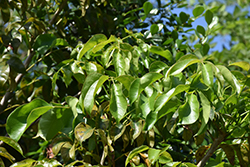It's all about ...
plants

Height: 40 feet
Spread: 30 feet
Sunlight:
![]()
Hardiness Zone: 10a
Other Names: Gumbo-limbo, Copperwood, Turpentine Tree
Description:
A large, semi-evergreen tree prized for its lustrous, peeling copper colored bark and its open, irregular to rounded crown; shiny, compound green leaves emits turpentine odor when crushed; red fruit persists all year; a striking large landscape feature
Ornamental Features
Gumbo Limbo Tree is primarily valued in the landscape for its ornamental upright and spreading habit of growth. It has attractive dark green deciduous foliage. The fragrant oval compound leaves are highly ornamental but do not develop any appreciable fall colour. It produces red capsules from late summer to late spring. The peeling coppery-bronze bark is extremely showy and adds significant winter interest.
Landscape Attributes
Gumbo Limbo Tree is a deciduous tree with an upright spreading habit of growth. Its average texture blends into the landscape, but can be balanced by one or two finer or coarser trees or shrubs for an effective composition.
This is a relatively low maintenance tree, and can be pruned at anytime. It is a good choice for attracting birds, bees and butterflies to your yard. It has no significant negative characteristics.
Gumbo Limbo Tree is recommended for the following landscape applications;
- Accent
- Shade
- Windbreaks and Shelterbelts
Planting & Growing
Gumbo Limbo Tree will grow to be about 40 feet tall at maturity, with a spread of 30 feet. It has a low canopy with a typical clearance of 4 feet from the ground, and should not be planted underneath power lines. It grows at a fast rate, and under ideal conditions can be expected to live for 80 years or more.
This tree should only be grown in full sunlight. It prefers dry to average moisture levels with very well-drained soil, and will often die in standing water. It is considered to be drought-tolerant, and thus makes an ideal choice for xeriscaping or the moisture-conserving landscape. This plant will benefit from an application of bonemeal and/or mycorrhizal fertilizer at the time of planting. It is not particular as to soil type or pH, and is able to handle environmental salt. It is somewhat tolerant of urban pollution. This species is not originally from North America..
This plant is not reliably hardy in our region, and certain restrictions may apply; contact the store for more information.
